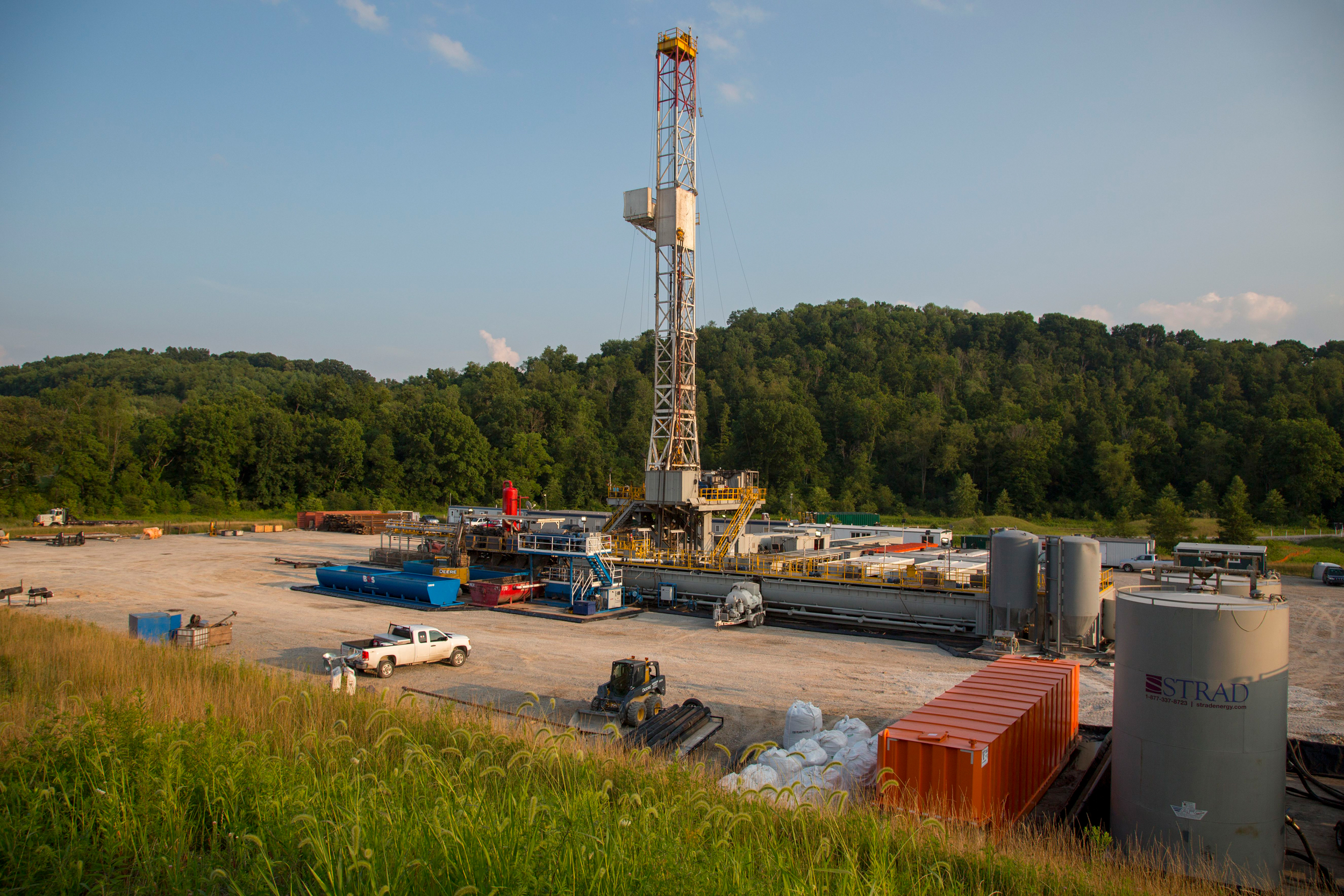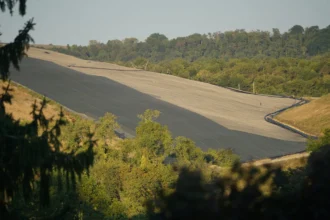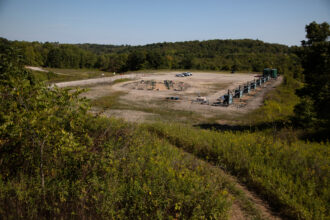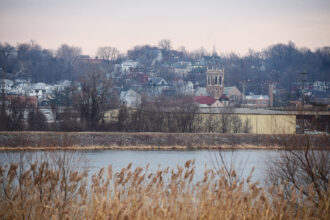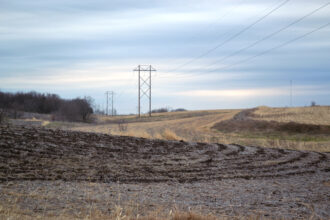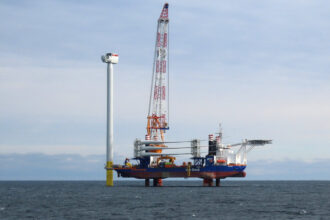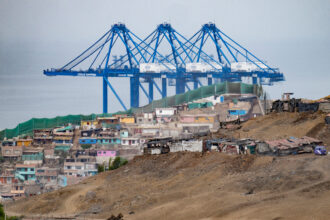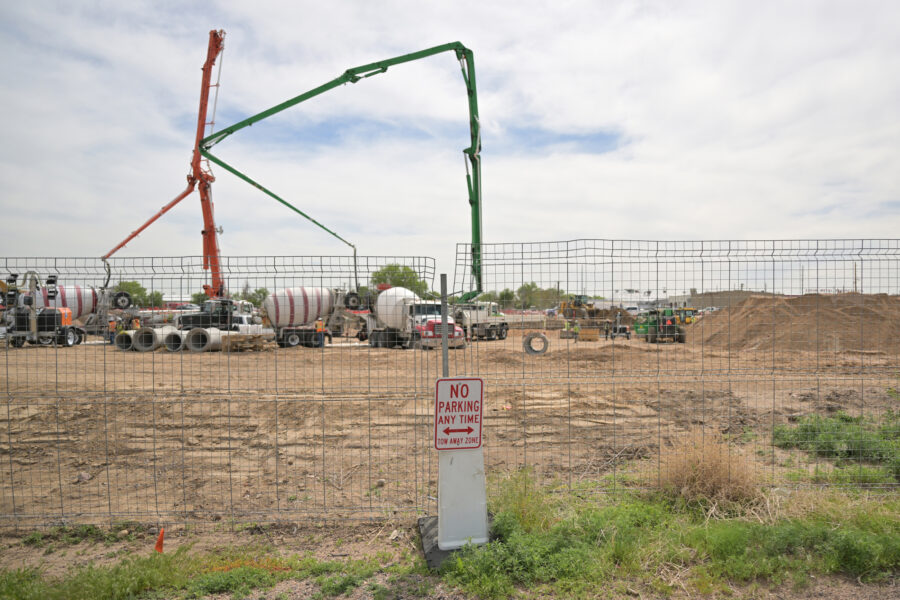In the summer of 2022, John Stolz got a phone call asking for his help. This request—one of many the Duquesne University professor has fielded—came from the Center for Coalfield Justice, an environmental nonprofit in southwestern Pennsylvania.
They told him about New Freeport, a small town in Pennsylvania’s Greene County that had experienced what’s called a “frac-out,” when drilling fluids used in the fracking process escape their intended path and end up at the surface or elsewhere underground, in this case via an abandoned gas well nearby. Residents had noticed strange odors and discoloration in their well water. Their pets were refusing to drink it. Now they wondered if it was unsafe.
Stolz, who has been testing water for signs of pollution from fracking for more than 10 years, agreed to find out.
The testing that he and his colleagues carried out over the next two years shows that residents were right to be concerned. They found evidence for oil and gas contamination in a larger geographic area than was initially reported, according to a study published last month. Of the 75 samples tested, 71 percent contained methane.
“We found significant contamination,” Stolz said. “Essentially half of the people in our study had bad water.” Two of the wells registered “explosive levels of methane,” he said. “The homeowners had no clue it was that bad.”
Sarah Martik, the executive director at the Center for Coalfield Justice, said she was grateful for Stolz’s work. “Dr. Stolz has been one of the only people in our area that we can count on to come provide free water tests,” she said.
Stolz said the more people heard about the study, the bigger it got. “It started essentially on Main Street, where that initial report came in,” he said. “But I gave a couple of presentations down there with our preliminary results, and it grew, and people started calling and saying, ‘Would you test my water?’”
Guy Hostutler, the chairman of the board of supervisors in Freeport Township, where New Freeport is located, said at least 22 households there rely on holding tanks called water buffaloes right now because of contamination, and others are using five-gallon jugs brought in by the Center for Coalfield Justice. Some people have installed filter systems.
In addition to the pollution issues, some New Freeport residents have also recently noticed their wells are drying up.
In 2024, residents filed a class-action lawsuit against fracking company EQT, the owner of the well pad that is the alleged source of the frac-out. “I am hopeful that this publication is going to lend a lot of credibility to that fight,” Martik said. “This study is really a validation of what people already know. They have this thing that they’re able to point to now and say, ‘Hey, EQT, this did happen, and I have been impacted.’”
How to Get Your Water Tested
Penn State offers drinking water testing through its Agricultural Analytical Services Laboratory, which is accredited by Pennsylvania’s Department of Environmental Protection. Prices start at $15, and residents typically receive test results two to three weeks after sending in water samples. You can order testing for basic contaminants like E. coli bacteria as well as for pollution from oil and gas drilling and mining.
EQT has maintained that it bears no responsibility for the contamination. The company did not respond to a request for comment. When the Pennsylvania Department of Environmental Protection tested wells in New Freeport, the agency found that the water was not safe for human consumption but did not find a link to oil and gas drilling, according to spokesman Neil Shader.
Stolz said he thought DEP had not “fully utilized the data they have” to make a determination on the source of the contamination, which is complicated by the fact that an abandoned conventional gas well was involved. “You have to look at the broader picture and the timeline of events,” he said. “It’s very clear that things changed after the frac-out.”
DEP is now investigating more recent complaints in the area that water sources have been contaminated by oil and gas.
New Freeport is not the only town in Pennsylvania to find its water contaminated after oil and gas drilling took place nearby. Its story mirrors that of Dimock, a community in the northeastern part of the state that has been without clean water for more than a decade. Dimock made headlines around the world after residents were filmed setting fire to their water. They’re still waiting for a promised public water line.
Groundwater contamination poses particularly acute public health dangers in Pennsylvania, where more than 25 percent of adults use private wells as their primary source for drinking water, 10 percentage points higher than the national average.
And the water in those private water wells—serving more than 3 million people—is rarely tested, according to Penn State University’s Drinking Water program.
“You’re looking at community after community across the state and in the tri-state region losing their water. What we’re trying to call attention to is these things happen, and somebody has to be accountable,” Stolz said.
Daniel Bain, a co-author of the study and a professor at the University of Pittsburgh, said companies’ denial of responsibility for contamination becomes increasingly difficult to swallow as the number of incidents rises. “They start to lose credibility. When they say there’s no problem, then you’re like, ‘Well, who do I trust? Do I trust my water ever again?’” he said.
This story is funded by readers like you.
Our nonprofit newsroom provides award-winning climate coverage free of charge and advertising. We rely on donations from readers like you to keep going. Please donate now to support our work.
Donate NowFrac-outs are relatively rare, but Pennsylvania’s hundreds of thousands of abandoned and orphaned oil and gas wells make them more probable. These wells are not easily detectable, their locations are often unknown and they’re estimated to be more numerous here than in any other state.
DEP recorded 54 “communication” incidents, as frac-outs are called, between 2016 and 2024.
The Freeport township supervisors have one piece of advice for others who live near fracking.
“If you suspect that there’s ever going to be any drilling, get your water tested,” said Tim Brady, the vice-chairman.
Residents can contact Penn State’s Agricultural Analytical Services Laboratory to get testing for oil and gas contaminants, which costs $75.
“Pay the money to have the test done so you have it in hand,” Brady said. “It helps not only you, but it would also help your local government. Seventy-five dollars is worth its weight in gold whenever it comes to fighting a battle like this.”
With baseline test results, investigators can more easily pinpoint the source of the contamination, allowing them to distinguish between fracking pollution and other sources, like old coal mines and abandoned oil and gas wells.
Stolz and Bain’s approach relies on “the preponderance of evidence” to separate fracking contamination from legacy pollution caused by other fossil fuel extraction. The results in this paper present “compelling evidence that the frac-out profoundly changed local well water chemistry even without sample data prior to the event for comparison,” according to the authors.
Bain said the unpredictable nature of frac-outs means their impacts are more likely to evade regulatory scrutiny. According to state law, contamination within 2,500 feet of a fracking well is presumed to be caused by that drilling. But there is no such “zone of presumption” for frac-outs.
“If it were around a well, it would be 2,500 feet. But because it’s around a frac-out, it’s zero feet, and there’s no responsibility whatsoever,” Bain said.
Just last month, Freeport Township declared a disaster emergency, stating that the frac-out had “endangered or will endanger the health, safety and welfare of a substantial number of persons residing in Freeport Township.” Local officials are working to resolve the crisis on several fronts: opening a new investigation with DEP over the water quantity issues, raising money to build a public water line and talking to state and federal officials about what options they have for funding.
“We’re doing everything in our power,” Hostutler said. “We’re going to fight as long as we can.”
Hostutler said a few people have moved away in the three years since the frac-out happened, and others are trying to sell their houses. A water buffalo costs $3,000 a month, an expense many residents cannot afford. He worries about what will happen over the long term to the community, which he describes as a close-knit little village where everyone knows each other and looks out for one another.
“We’ve lost a lot of residents over the years. And we want to keep what we have,” Brady said. “It’s not going to be easy, but you just take a look at all the towns around here that’s lost water. They’re non-existent anymore. We don’t want to end up like that. If you don’t have water, you don’t have anything.”
About This Story
Perhaps you noticed: This story, like all the news we publish, is free to read. That’s because Inside Climate News is a 501c3 nonprofit organization. We do not charge a subscription fee, lock our news behind a paywall, or clutter our website with ads. We make our news on climate and the environment freely available to you and anyone who wants it.
That’s not all. We also share our news for free with scores of other media organizations around the country. Many of them can’t afford to do environmental journalism of their own. We’ve built bureaus from coast to coast to report local stories, collaborate with local newsrooms and co-publish articles so that this vital work is shared as widely as possible.
Two of us launched ICN in 2007. Six years later we earned a Pulitzer Prize for National Reporting, and now we run the oldest and largest dedicated climate newsroom in the nation. We tell the story in all its complexity. We hold polluters accountable. We expose environmental injustice. We debunk misinformation. We scrutinize solutions and inspire action.
Donations from readers like you fund every aspect of what we do. If you don’t already, will you support our ongoing work, our reporting on the biggest crisis facing our planet, and help us reach even more readers in more places?
Please take a moment to make a tax-deductible donation. Every one of them makes a difference.
Thank you,


